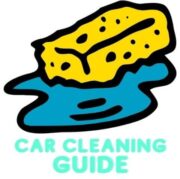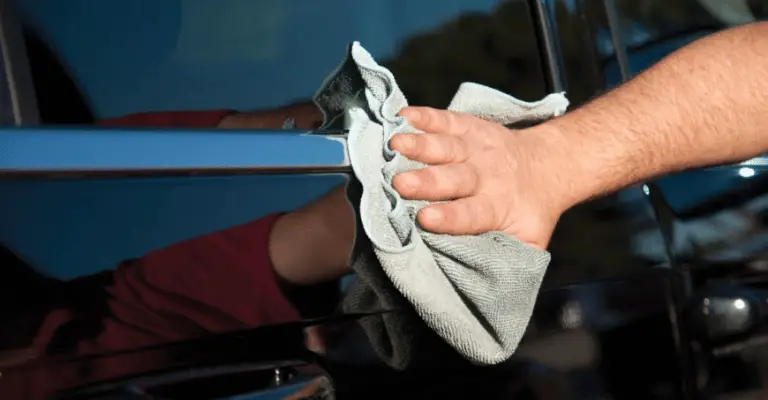- How to Clean Car Carpets Quick and Easy - July 10, 2024
- Can You Touch Up Clear Coat? Yes and No (Here’s Why) - November 25, 2023
- How To Wax A Car By Hand: A Comprehensive Guide - November 14, 2023
Last Updated on November 14, 2023 by Chase Manhattan
Waxing a car by hand is a time-honored practice that not only enhances the aesthetics of your vehicle but also provides a protective layer against potential damage. This comprehensive guide is designed to help you carry out the task efficiently and effectively.
Quick Navigation
What Are The Benefits of Waxing Your Car?
Waxing your vehicle is not just about giving it a glossy finish. The process also offers several benefits:
- Protection against Scratches and Swirl Marks: Wax provides a protective layer over the car’s paint, minimizing the risk of scratches and swirl marks.
- Preserving Paint Job: Waxing helps to maintain the car’s paint job, thereby preserving its new-like appearance.
- Increased Resale Value: Regular waxing can help maintain your car’s value by keeping it in top condition.
- Protection from Environmental Damage: Waxing can protect your car from exposure to harmful UV rays, rain, bird droppings, and dust.
How Long Does It Take To Wax A Car By Hand?
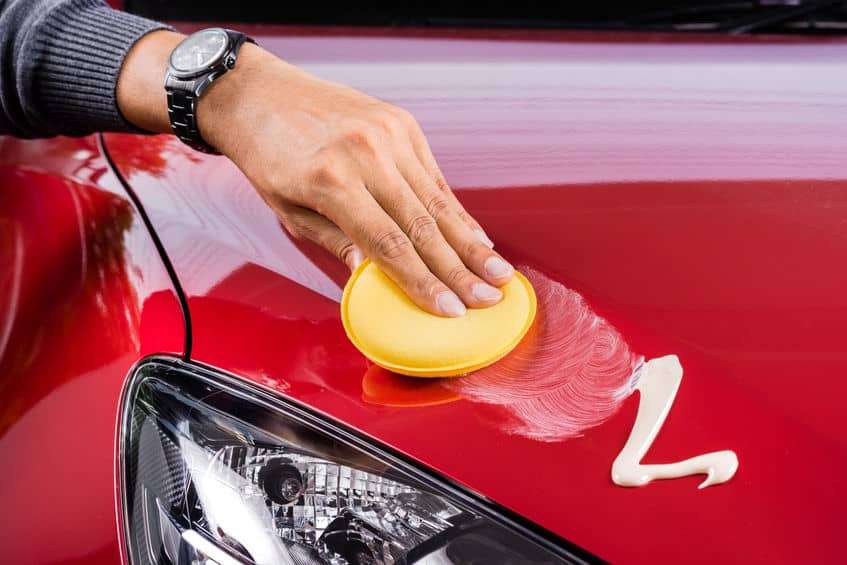
Depending on the size of the car and your expertise, waxing a car by hand can take anywhere between 1 to 4 hours. This timeframe includes washing, drying, and applying the wax.
How about waxing a car with a buffer?
What Kind Of Wax Should You Use?
Synthetic Wax vs Carnauba Wax
Synthetic wax, often made from polymers, is known for its durability and easy application. It offers long-lasting protection and a high-gloss finish. Carnauba wax, derived from Brazilian palm leaves, is prized for the rich, deep shine it imparts.
Related: Carnauba Wax Vs Synthetic Wax – Which Is Better For You?
Ceramic Coating vs Wax
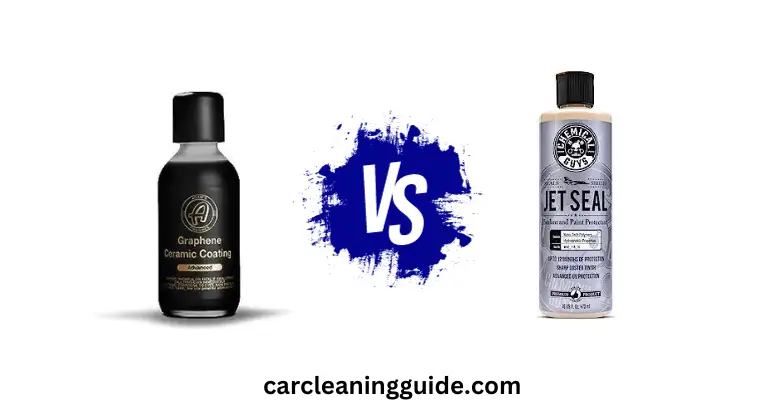
Ceramic coating provides a higher level of protection than wax. It offers longer-lasting protection, higher gloss levels, and better resistance to chemical etching. However, it is more expensive and requires a more complex application process.
Related: Ceramic Coat vs Wax: What’s Better? [Definitive Overview]
Paint Sealant vs Wax
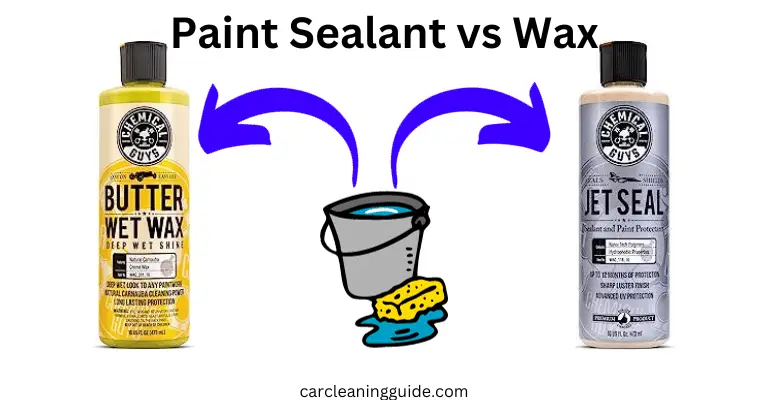
Paint sealants are synthetic products designed to provide a long-lasting, durable finish. They last longer than traditional waxes but may not provide the same depth of shine.
Related: Paint Sealant vs Wax: One Better? Any Difference At All?
Spray Wax vs Paste Wax
Spray wax is easy to apply and ideal for maintaining an already waxed surface. Paste wax, on the other hand, tends to last longer and provides a richer shine.
When Is The Best Time To Wax A Car?
The best time to wax your car is when the weather is cool and dry. Avoid waxing in direct sunlight as it can cause the wax to dry too quickly, making it difficult to remove.
Read more: How Often Should You Wax Your Car? (+Important Tips)
How To Wax A Car By Hand (Step-By-Step Guide)
Before we break down each step, here’s a brief overview of how to wax your car by hand:
- Gather Necessary Equipment
- Clean the Car Thoroughly
- Set Up a Cool and Dry Workspace
- Work Section by Section
- Allow Time to Dry
- Buff Off the Film
- Remove Remaining Streaks
- Admire Your Work
Ready? Let’s keep moving! Watch the video or keep scrolling for the step by step.
1. Gather The Necessary Equipment
You’ll need:
- Car Wax
- Microfiber Towels
- Foam Applicator Pads
- Car Shampoo
- Clay Bar (Optional)
- Polish (Optional)
2. Clean The Car Thoroughly, If Not Already
Start by washing your car to remove any loose dirt and grime. Use a specialist shampoo and plenty of clean water.
3. Set Up Your Cool and Dry Work Space
Choose a shaded area or a garage for waxing. This helps to avoid contamination and prevents the wax from drying out too quickly.
4. Work Section by Section (Smaller to Larger)
Apply the wax in small sections, using a foam applicator pad. Take your time and ensure that the wax is applied evenly.
5. Allow Time To Dry
Once the wax is applied, allow it to dry to a haze. This typically takes about 5 to 10 minutes, depending on the product and weather conditions.
Related: How Long to Leave Wax on Car: A Definitive Overview
6. Buff Off The Film
Use a clean microfiber towel to buff off the dried wax. Use long smooth strokes and avoid buffing in a circle as this can leave swirl marks on your paint.
7. Remove Any Remaining Streaks
If any streaks are left after the buffing process, remove them with a clean microfiber towel.
8. Admire Your Work
Once you’ve finished waxing and buffing your car, it’s time to step back and admire your work. You should now have a vehicle with a deep, glossy shine that is protected from the elements.
Wrapping Up
Waxing a car by hand might seem like a daunting task, but with the right tools and techniques, it’s a job that anyone can accomplish. Regularly waxing your vehicle will not only keep it looking its best, but it can also help to maintain its value and longevity.
Frequently Asked Questions
What Are the Essential Supplies Needed for Hand Waxing a Car?
To hand wax a car effectively, you’ll need a few key supplies. These include a high-quality car wax, a microfiber cloth or foam applicator pad for applying the wax, and a separate clean microfiber towel for buffing. Additionally, it’s advisable to have a car wash soap, a bucket, and a water hose or buckets for pre-wax washing.
How Often Should You Wax Your Car by Hand?
The frequency of waxing your car depends on various factors like the climate, car usage, and the type of wax used. Generally, it’s recommended to wax your car every three to four months to maintain its shine and protect the paint.
What Are the Steps to Properly Wax a Car by Hand?
To wax a car by hand, start by washing and drying the car thoroughly. Apply a small amount of wax to the foam applicator or microfiber cloth and spread it evenly in a circular motion, one section at a time. Allow the wax to haze, then buff it off with a clean microfiber towel, again using a circular motion.
How Long Does Hand Wax Last on a Car?
The longevity of a hand wax depends on the type of wax and environmental factors. Generally, a good quality carnauba wax can last up to 6 weeks, while synthetic waxes can last 3 to 6 months.
